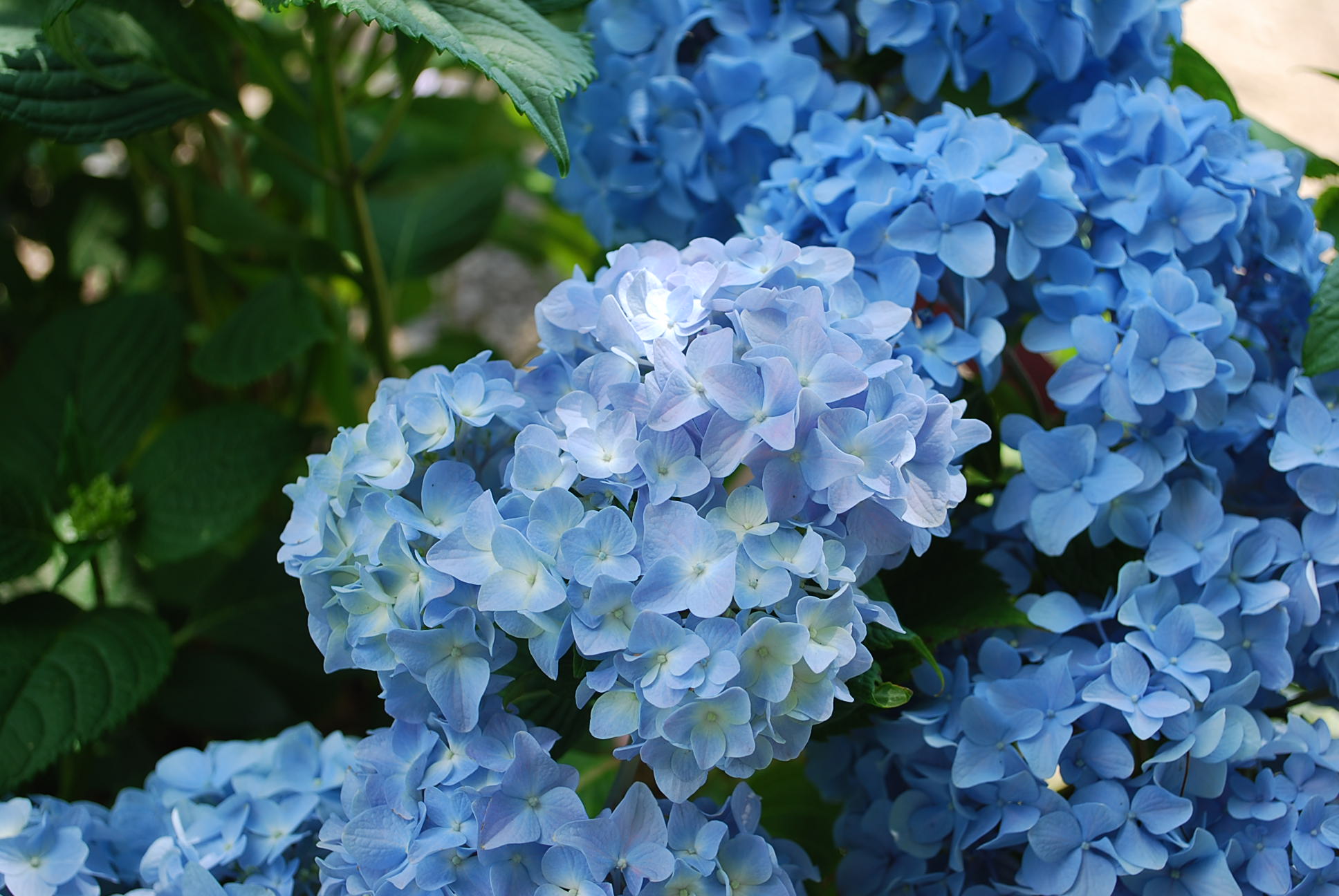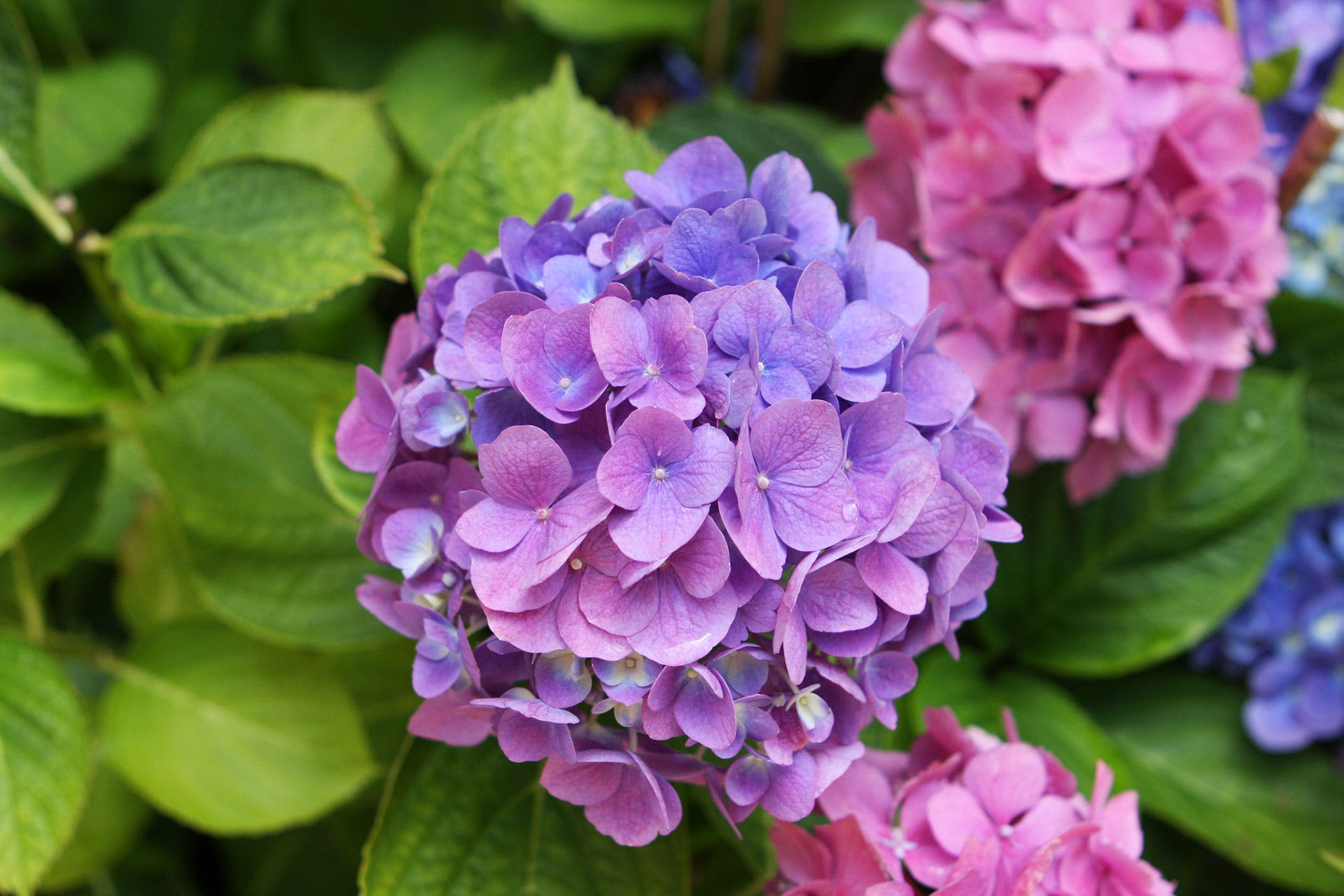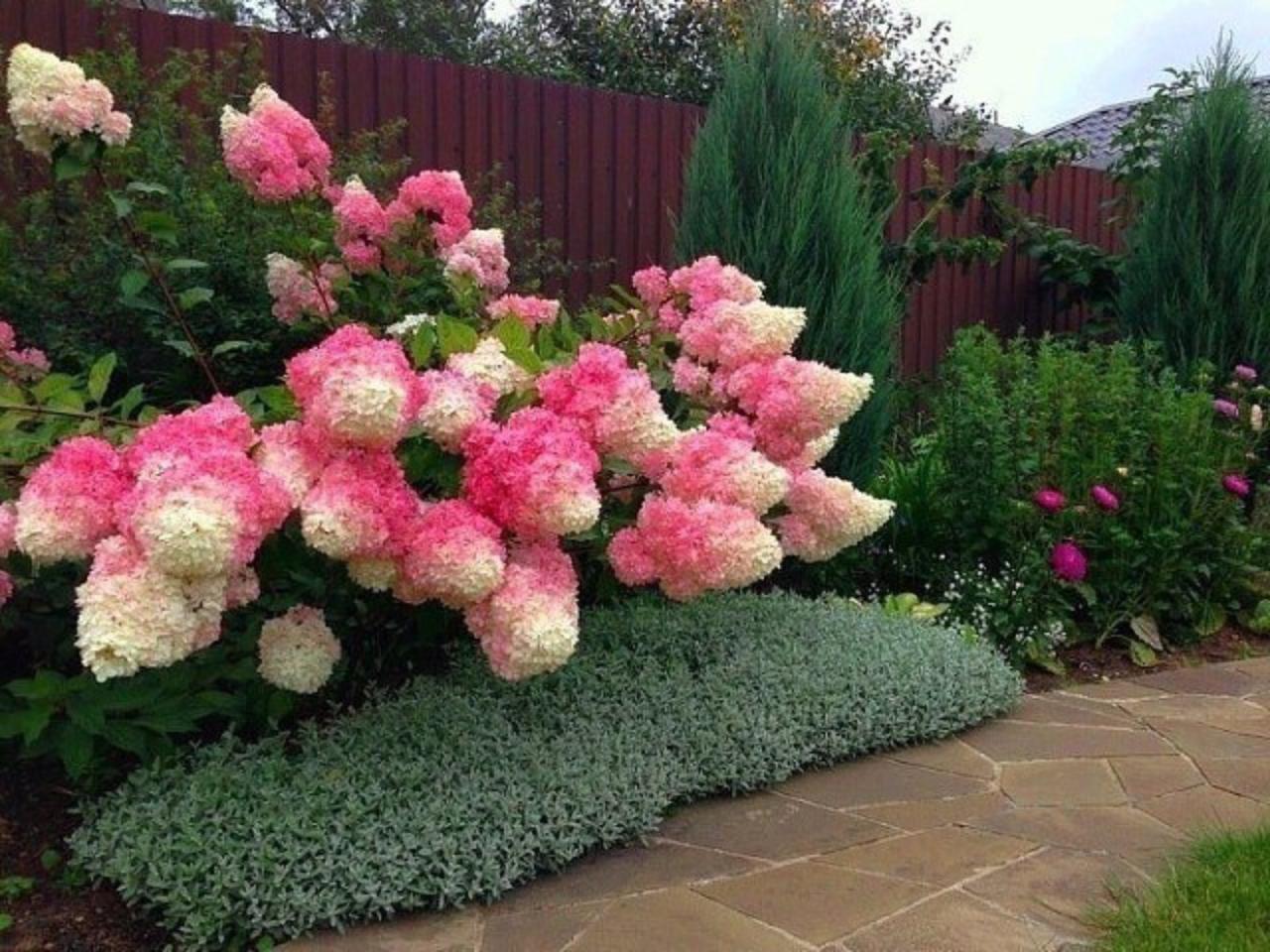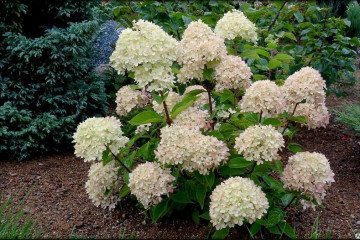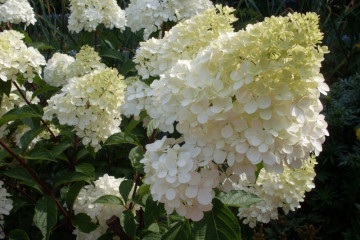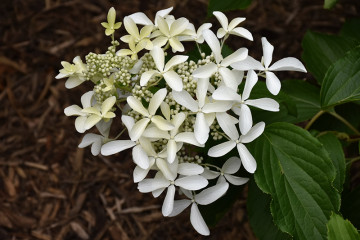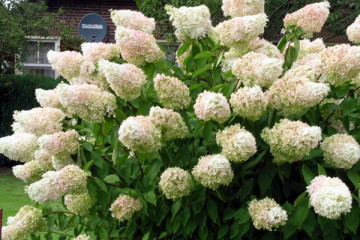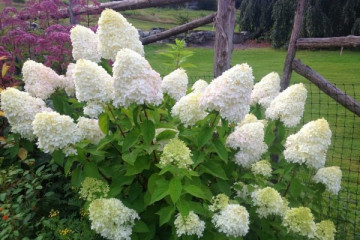Hydrangea Diamantino paniculata (Diamantino)
Content:
Hydrangea Diamantino is a real chameleon plant. The flower beckons with its beautiful appearance and unique properties. Botanists and gardeners pay special attention to the care of the paniculata. You can learn more about all the features by reading the article.
The origin and appearance of the Diamantino hydrangea
The hydrangea of this subspecies is the largest among the representatives of its species. She has lush inflorescences that can reach 20 cm in length, as well as many different colors. Diamantino hydrangea inflorescences have an elongated shape, sometimes, due to abundant flowering, the leaves and branches of the bush are invisible.
The description of the Diamantino hydrangea reveals a small feature: experienced gardeners can change its color by adjusting the composition of the soil. If Diamantino is planted in slightly alkaline soil, then it will acquire more pink shades, and if it is sour, then the inflorescences will be colored in bluer shades.
Some even plant the flower in highly alkaline soil. Despite the fact that hydrangea does not tolerate this type of soil, as a result, inflorescences of incredibly rich purple flowers are obtained. However, in order for the plant to thrive in these conditions, it needs proper care.
Transplanting Diamantino hydrangea after purchase in open ground
The newly purchased hydrangea must be transplanted into open ground. They do this according to certain rules.
What is needed for landing
For good flowering, you need to prepare the soil before planting. Gardeners do this from the thawing period to budding. At this time, the material is planted, which contributes to the further development of the plant.
Planting the Diamantino panicle hydrangea in open soil is recommended in spring or autumn. This distribution depends on the local climate. If it is cold and does not contribute to the favorable development of the plant, it is better to plant the hydrangea in the ground in the spring. This is necessary in order for the shrub to get used to and take root in new conditions.
Choosing the best place
The type of hydrangea Diamantino is very fond of the sun and neutral lining. Therefore, before planting, it is necessary to find a place where this plant will feel as comfortable as possible.
You should not plant the specified variety under trees, as the roots of the tree absorb all the water and nutrients from the soil, which harms the hydrangea. An important condition is planting bushes in places where direct sunlight does not fall. Aggressive sun causes the soil to dry out quickly. As a result of this planting, the plant begins to bloom much later than usual.
Step-by-step planting process
There is nothing difficult in planting this variety. But it is still important to follow certain rules:
- In order to properly plant a plant, you need to dig a hole measuring 30x40x30 cm. These are approximate parameters.
- The excavated soil must be mixed with certain substances for better plant development: peat, sod land, organic and mineral fertilizers, sand.
- During planting, the roots are shortened, which contributes to better absorption of nutrients from the soil.
- In order for the bush to start growing as quickly as possible, it is not advised to deepen the root collar by more than 2-3 cm.
- After planting, you need to tamp the soil very carefully, which will help to avoid drying out of the roots. Also, the soil must be mulched - chips, bark and peat are poured around the planted plant, with a layer of at least 7 cm.
Propagation of hydrangea Diamantino
There are two main methods of propagation: cuttings and seeds. Each of them has its own rules, observing which you can get a beautiful and healthy flower.
Propagation by cuttings
This method is the most common. It allows you to breed offspring that retain all maternal qualities.
In order to prepare for propagation by cuttings, it is necessary to cut them correctly. You need to follow certain recommendations:
- there should be several buds on the handle, you need to cut it 2 cm under the bud. If the shoot is large enough, a cut is made 5 cm above the bud, if it is small, the cut is not made;
- it is advisable to cut off all the leaves that are below, 1-2 leaves should be left at the top.
After completing the procedure, for better growth, the cuttings must be soaked in water and treated with a growth stimulator. The seedlings are placed in containers in a cool place while maintaining constant moisture. A sprouted stalk can be planted in the ground after a year, preferably in August.
Growing from seeds
In order to grow hydrangeas from seeds, they must be sown on seedlings in February. For better assimilation of seeds, it is recommended to use a loose and nutritious mixture of leaf, peat soil and river sand.
After that, the crops must be covered with a thin layer of soil, as well as moistened and covered with a film. However, many gardeners say that this method of plant propagation is ineffective. As a result, the seedlings come out uncooked, the properties that the plant originally possessed are lost. Also, the first results can be seen only four years later.
Diamantino hydrangea care
Observing the rules of caring for the plant, you can admire its flowering for a long time. It is important to water and feed it on time, as well as take into account some features at different periods of development.
Watering mode
Hydrangea paniculata is very fond of moisture. Therefore, to maintain abundant flowering, the soil should be watered regularly. Mulching the soil is encouraged, which will help it stay moist for a long time. There are no rules for watering, since this plant can easily grow even in swampy areas. In the summer, it is advisable to water the hydrangea daily or every other day.
Top dressing
Also, as with watering, panicle hydrangea for normal growth and flowering is significant with abundant feeding. If there is no regular feeding, then the shrub stops growing and flowering stops.
For a beautiful flowering of Diamantino hydrangea, you need to fertilize the soil with minerals designed specifically for the blooming "green brothers". Fertilizers need to be applied to the soil every ten days, preferably using water-soluble minerals that will be applied to the soil along with irrigation. The interval between dressings should not be more than two weeks, since in this case the flower does not grow well and gives a faded flowering.
Features of care during the flowering period
It is very important to trim the flowers during flowering. This will help give a more lush look and colorful bloom.This procedure must be followed according to all the rules, since careless pruning of the shrub can lead to less luxurious flowering.
- When starting pruning shrubs, get rid of crooked branches.
- After cutting off all the shoots of the last year for 3-4 buds.
These are the basic rules for pruning shrubs that have just begun flowering. After a while, after the plant has produced 6-8 branches, it can be cut to the ground. Such actions are necessary in order for the plant to form strong shoots. However, this will happen provided that a strong root system is formed.
Features of care during the rest period
During rest, Diamantino's hydrangea needs to be watered abundantly and supplied with fertilizers. You also need to feed in several stages:
- the first - in June, for the abundant formation of buds;
- the second - in the summer, during the flowering period, is necessary for further abundant flowering;
- the third - in the fall, just before the dormant period. Top dressing consists of superphosphate and potassium sulfate.
Preparing for winter
Before the arrival of winter, panicle hydrangea must be carefully prepared for the harsh cold weather. This plant can easily survive winter frosts, but it is desirable to provide young plants with "protection".
Although adult hydrangeas are frost-resistant, wintering in shelters, they begin to bloom more abundantly earlier. To prepare for winter, the soil around the hydrangea is covered with peat and humus, the branches are cut off to 5 buds. It is also advisable to tie the branches into one bunch, but in young plants it is better not to do this, as they can break. The connected branches are covered with foil or burlap, sprinkled with sawdust or dry leaves on top.
Diamantino panicle hydrangea is a very beautiful and bright flower, a favorite of gardeners, florists and just creative people. It is not for nothing that the paniculata is present in many delicate photographs or beautiful paintings.
